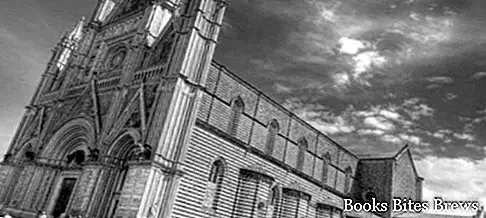What to see in Orvieto, one-day itinerary including the main monuments and places of interest, including the Duomo, Palazzo del Popolo and Pozzo di San Patrizio.
Tourist information
Located in Umbria in the province of Perugia, Orvieto stands on a volcanic tuff cliff at 325 m. s.l.m., surrounded by rolling hills.
The cliff was inhabited for the first time by the Etruscans between the ninth and eighth centuries BC, in the place called Velzna (in Latin Volsinii) and, starting from the beginning of the sixth century BC, it was a very flourishing center of Etruria.
In the third century BC the Romans destroyed this city and deported most of the inhabitants to the heights overlooking Lake Bolsena, giving birth to the new Volsinii, which corresponds to the current Bolsena, while Velzna became Volsinii-veteres or even Urbs Vetus, or the old city.
The centuries that followed were characterized by decay and abandonment, until the fall of the Western Roman Empire and the conquest of the city by the Goths and Byzantines.
Occupied by the Lombards in 596, Orvieto returned to bloom around the year one thousand.
In the twelfth century the Municipality was established, under the control of the Church State.
The thirteenth and fourteenth centuries coincided with a very important growth for Orvieto which involved, in addition to a demographic and territorial increase, an excellent architectural and artistic development, which resulted in the construction of noble palaces and valuable monuments, including the magnificent Cathedral and other churches in the city.
The rivalry between the two most important families of Orvieto, the Monaldeschi (Guelfi) and Filippeschi (Ghibellini), weakened the municipal government and favored the taking of power by the State of the Church with Cardinal Egidio Albornoz (1364), who restored the ancient Statute and shortly afterwards had the Rocca built.
A period of subjugation of the city to various Lordships followed, among which the Lords Biordo Michelotti, Giovanni Tomacello, Braccio Fortebraccio and Arrigo Monaldeschi della Vipera.
In 1450 Orvieto definitively re-entered the State of the Church, remaining there until the Unification of Italy, except for the Napoleonic period.
Recommended readings- Umbria: Sunday day trips
- Gualdo Tadino (Umbria): what to see
- Ferentillo (Umbria): what to see
- Orvieto (Umbria): what to see
- Castiglione del Lago (Umbria): what to see
In 1527 Pope Clement VII, during the sack of Rome provoked by the Lanzichenecchi (1527), moved for safety reasons to Orvieto, having Sangallo the Younger built the famous well of San Patrizio, to prevent that, in case of siege, the city remained without water.
Over the centuries, in order to search for water, many artificial cavities have been excavated in the subsoil of the cliff, which have ended up forming a labyrinth of galleries, tunnels, cisterns, wells and cellars, which today can be visited through a guided tour.
What see
Notable buildings are the Church of Sant'Andrea, the Church of San Giovenale, the Palazzo del Popolo and the Papal Palace.
Do not miss the Pozzo di San Patrizio, built on a design by Sangallo Il Giovane in the sixteenth century and 62 meters deep.
The most famous monument in Orvieto is the Duomo, which was built at the behest of Pope Nicholas IV and Francesco Monaldeschi, bishop between 1279 and 1295.
Its construction involved the demolition of the old cathedral of Santa Maria del Vescovado and the parish church of San Costanzo.
The project, in Romanesque style, was entrusted to Arnolfo di Cambio, but the intervention, inspired by Gothic art, by the architect and sculptor Lorenzo Maitani, called to direct the work in 1310 was decisive.
The façade is remarkable, which is harmonious and balanced, thanks above all to the respect for the Gothic forms established by the initial project.




